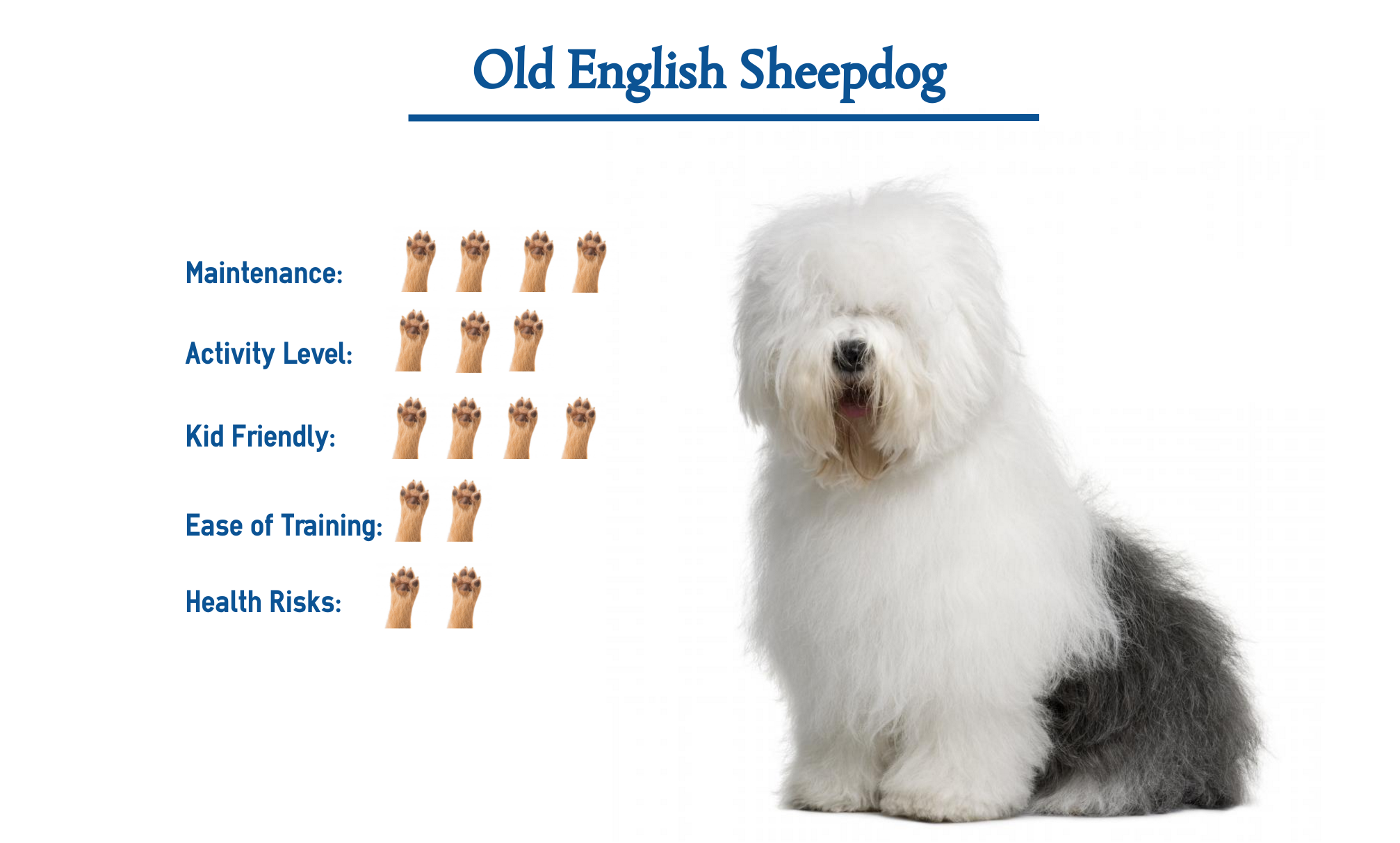If you ask us here at IndulgeYourPet, we believe the Old English Sheepdog (OES) is the friendliest dog breed. And sure, there will be those out there that may want to argue with us about this, but it’s tough to say that they’re not super friendly, and then when you combine this undeniable truth with the fact that they look like a giant stuffed animal…
Well…
That’s usually when folks who may have initially disagreed with us begin seeing the…
“Error of their ways”
But just because we feel these guys are fantastic doesn’t automatically mean they will be the “right” dog breed for you. You might prefer a pet that has a more “dignified” look and doesn’t constantly look like he just rolled out of bed!
Side note…
The Old English Sheepdog, also called the Shaggy Dog, for his shaggy hair, unkempt appearance, and role in a famous 1960s TV show.
This is why we wanted to take a moment and discuss exactly what it might be like to own one of these incredible creatures so that if you’re ever allowed to adopt one, you won’t regret your decision six months later.
So, without further ado, let’s dive right in!
Old English Sheepdog Fast Facts
Country of Origin: The UK
Height: 21 inches and up at the shoulder
Weight: 60 to 100 pounds
Dog Breed Classification: Herding group
Life Span: 10 to 12 years
Origin of the Old English Sheepdog
The Old English are working dogs that have been around in the Southwest of England since the early nineteenth century. It is theorized that these dogs were developed by cross-breeding the Bearded Collie with the Russian Owtchar. Back then, farmers used these dogs primarily as working or herding dogs. His job was to drive cattle or sheep to the market, which he proved pretty efficient due to his calm and composed nature.
This plus…
His loyalty and how he responded to the owner’s commands made him a favorite among many English farmers. And even though this dog has been around for quite a while and was one of the first dog breeds to be “officially” recognized by the American Kennel Club in 1888, these dogs didn’t start to become famous until they made their way to the United States.
It was here…
In the US that the modern breed standard for Old English was developed in the United States by the brother’s Henry and William Tilley and her in the US. Where these dogs became popular with the help of Hollywood in the 1960s and 70s, where they played starring roles in TV shows like “Please Don’t Eat the Daisies,” “The Shaggy Dog,” and “My Three Sons.” He remains a popular breed even today.
Physical Characteristics
The OES is a big dog. He stands at a height of 22 inches and weighs 70 to 100 pounds. He is a muscular, heavy dog with a balanced, square-shaped body. Despite his bear-like gait, he is agile, athletic, and can move fast. He has a broad chest, a large head, and a well-defined stop. His ears are small and flat, and his eyes are blue or brown. His coat may be gray, blue merle, grizzle, blue, brown, or fawn. He is covered with a lot of hair from head to tail.
Temperament and Personality
The Old English can be very funny and loves playing the clown. He is a good-natured dog that can serve multiple roles. He can be a family dog or companion dog, a herding dog or working dog, a watchdog, or even a show dog. And despite his looks, he is very athletic, fast, elegant, and quick to learn new tricks. He is perfect at dog sports such as agility, flyball, and obedience.
But probably the…
The best thing about the OES is that he can adapt to any setting – he is just as comfortable living in an apartment in a city as he is running around the countryside – As long as he gets to live with a loving family, one that cares for him and respects him. And as we’ve already mentioned a couple of times, these guys are incredibly loyal. He is one of those dogs that gets firmly attached to his human family and considers himself part of the family. When you are happy, he is comfortable, and when you are sad, he is unhappy.
He is that sort of a dog.
Potential Health Problems
The Old English is a “relatively” healthy dog for the most part, but even he can suffer from specific health issues.
- Addison’s Disease,
- Behavioral Disorders,
- Cerebellar Ataxia,
- Demodicosis,
- Distichiasis,
- Entropion,
- Factor IX Deficiency,
- Sebaceous Adenitis,
- Haemolytic Anaemia,
- Cervical Vertebral Malformation,
- Hip Dysplasia,
- Hypopigmentation,
- Hypothyroidism,
- Protein-losing Enteropathy,
- Microphthalmia,
- Otitis Externa,
- Protein-losing Enteropathy,
- Pododermatitis,
- Progressive Retinal Atrophy,
- Silica Urolithiasis,
- Immune-mediated Thrombocytopaenia,
- Von Willebrand’s Disease.
Phew! That’s a long list of health problems! And while many of these conditions may not be life-threatening, they can become quite expensive, particularly if they become recurring issues. This is why we here at IndulgeYourPet also recommend that any new pet owner take a moment and see what it might cost for you to purchase a pet insurance policy for your new animal.
Now will a pet insurance policy be suitable for everyone?
No, probably not. But until you fully understand what these policies “will” and “won’t” cover and how much these pet insurance policies cost, how will you know if one might be right for you?
For more information on who we feel currently offers the “best” pet insurance policies out there, we would encourage you to check out our Best Pet Insurance Policies article.




sheepdogs are the best AND SHEEPADOODLES
it’s true thogh they are the best dogs when I see my sheepadoodle he’s like: Hi WeLcOme